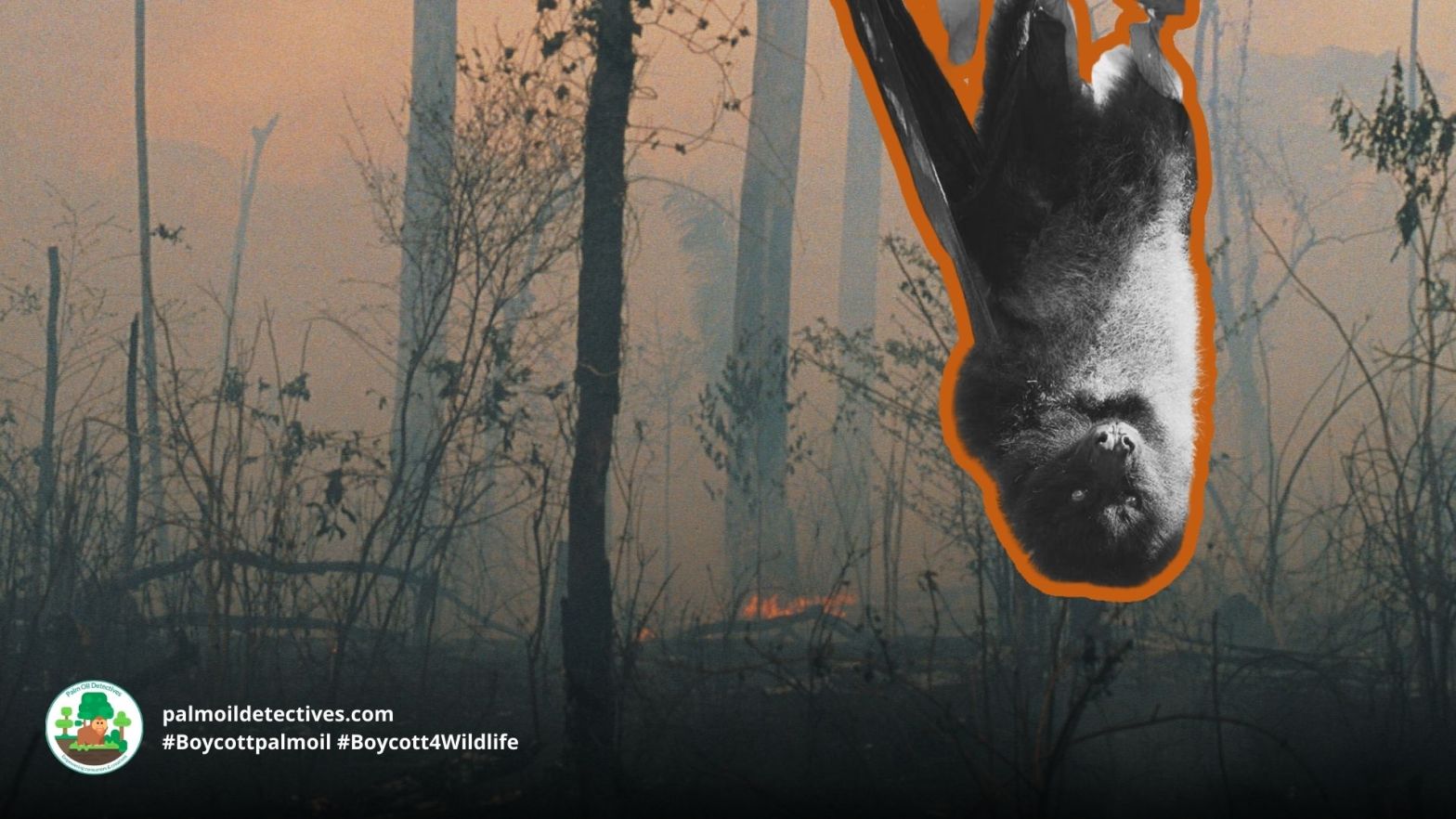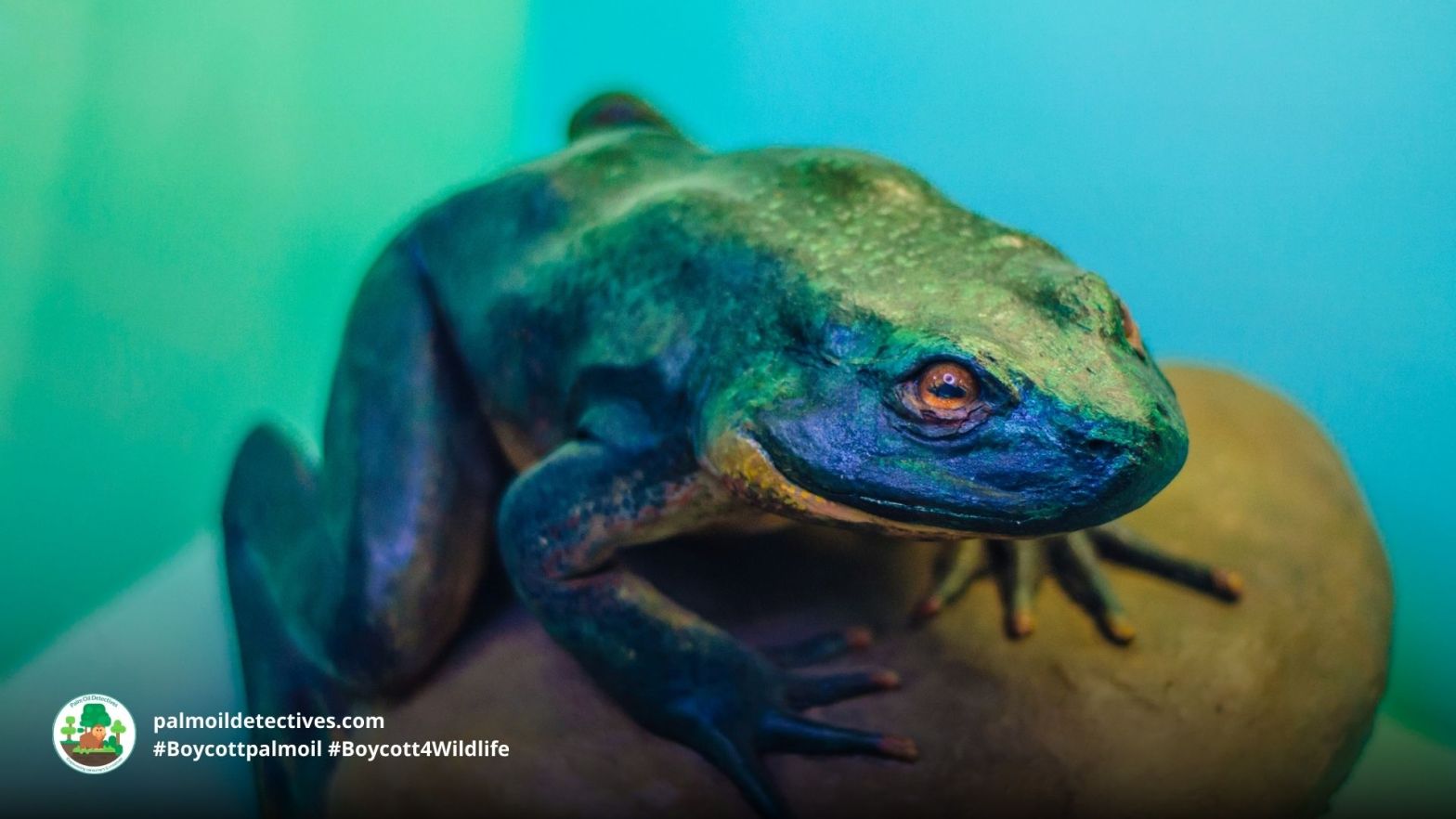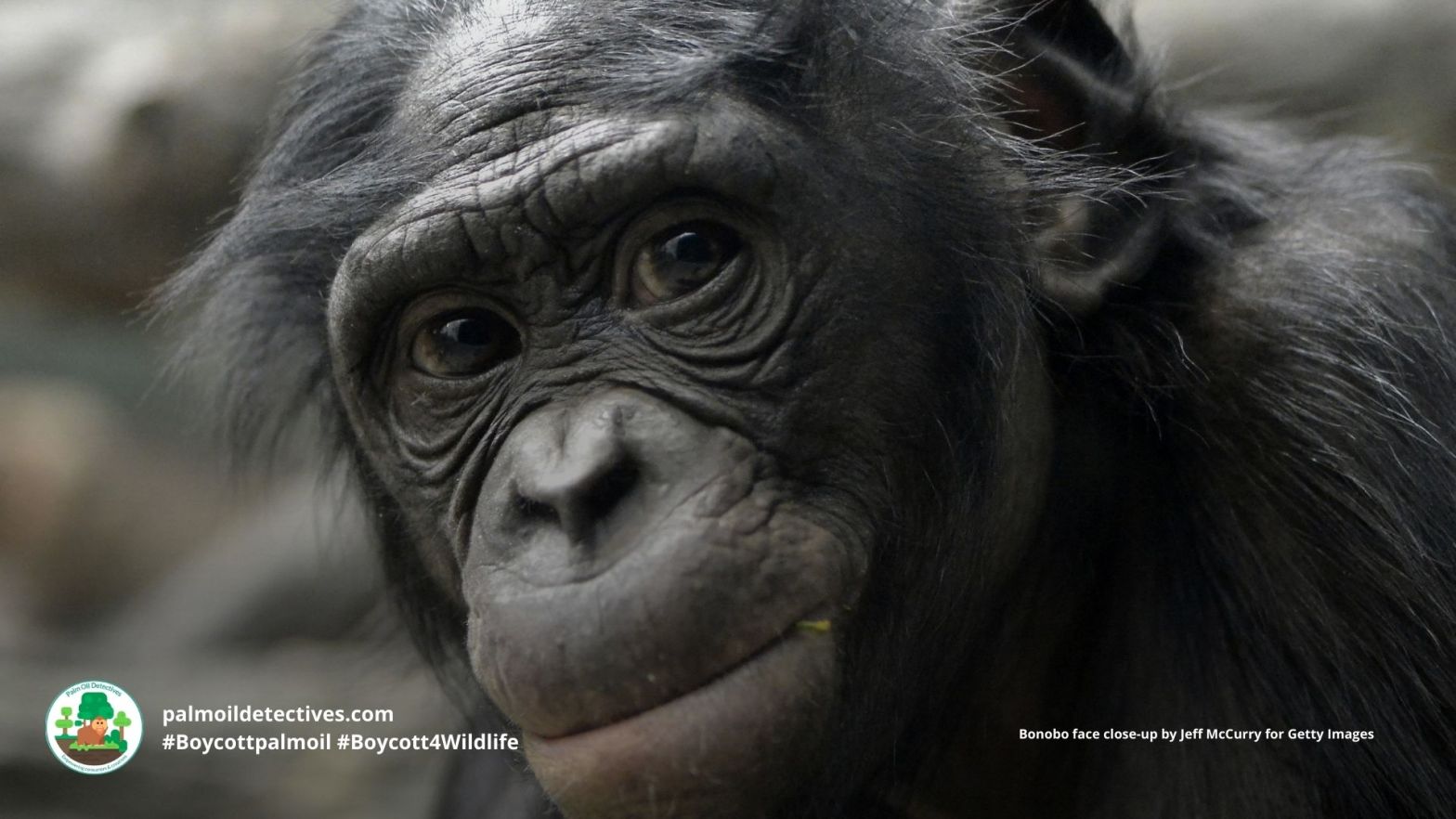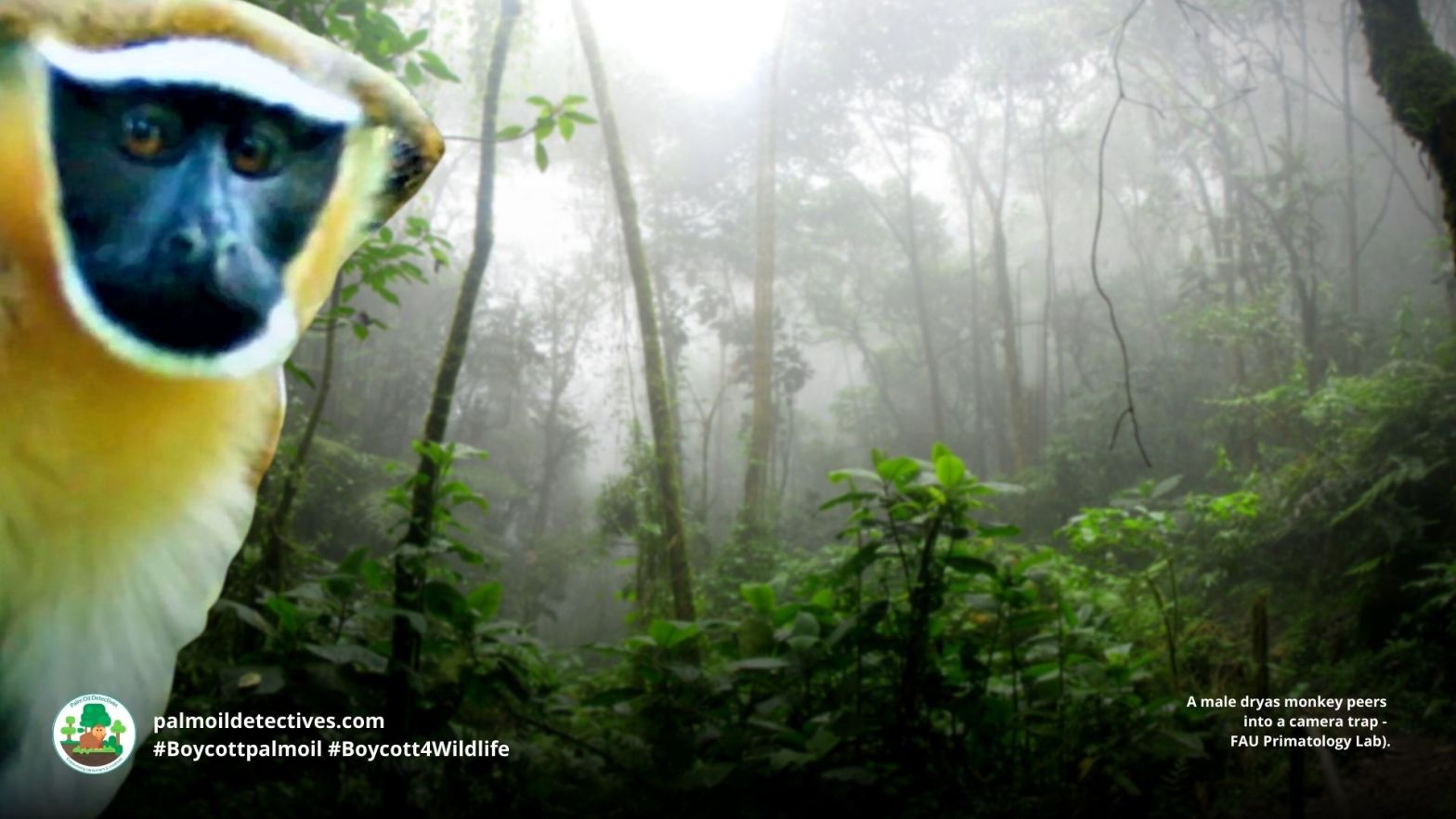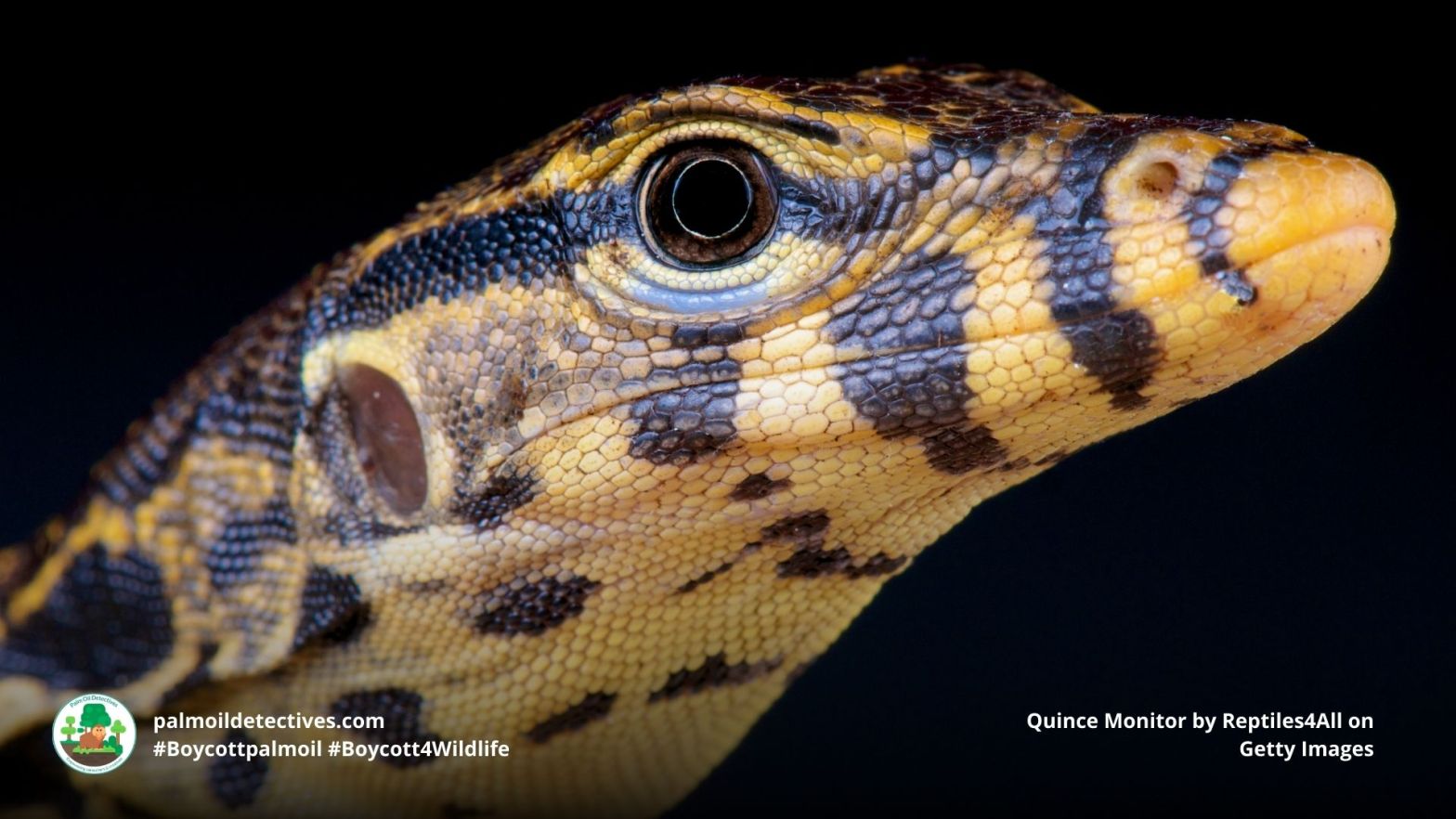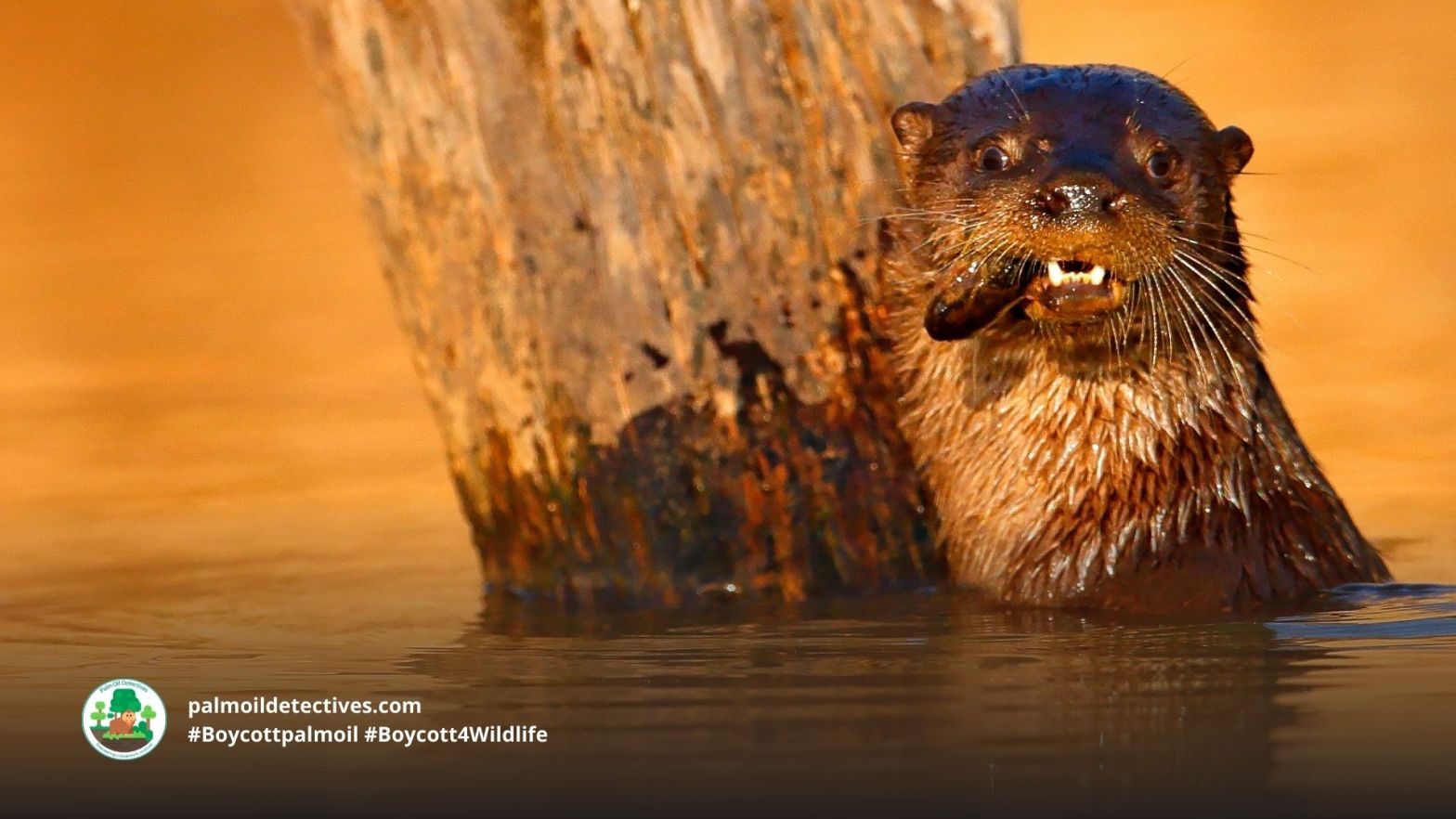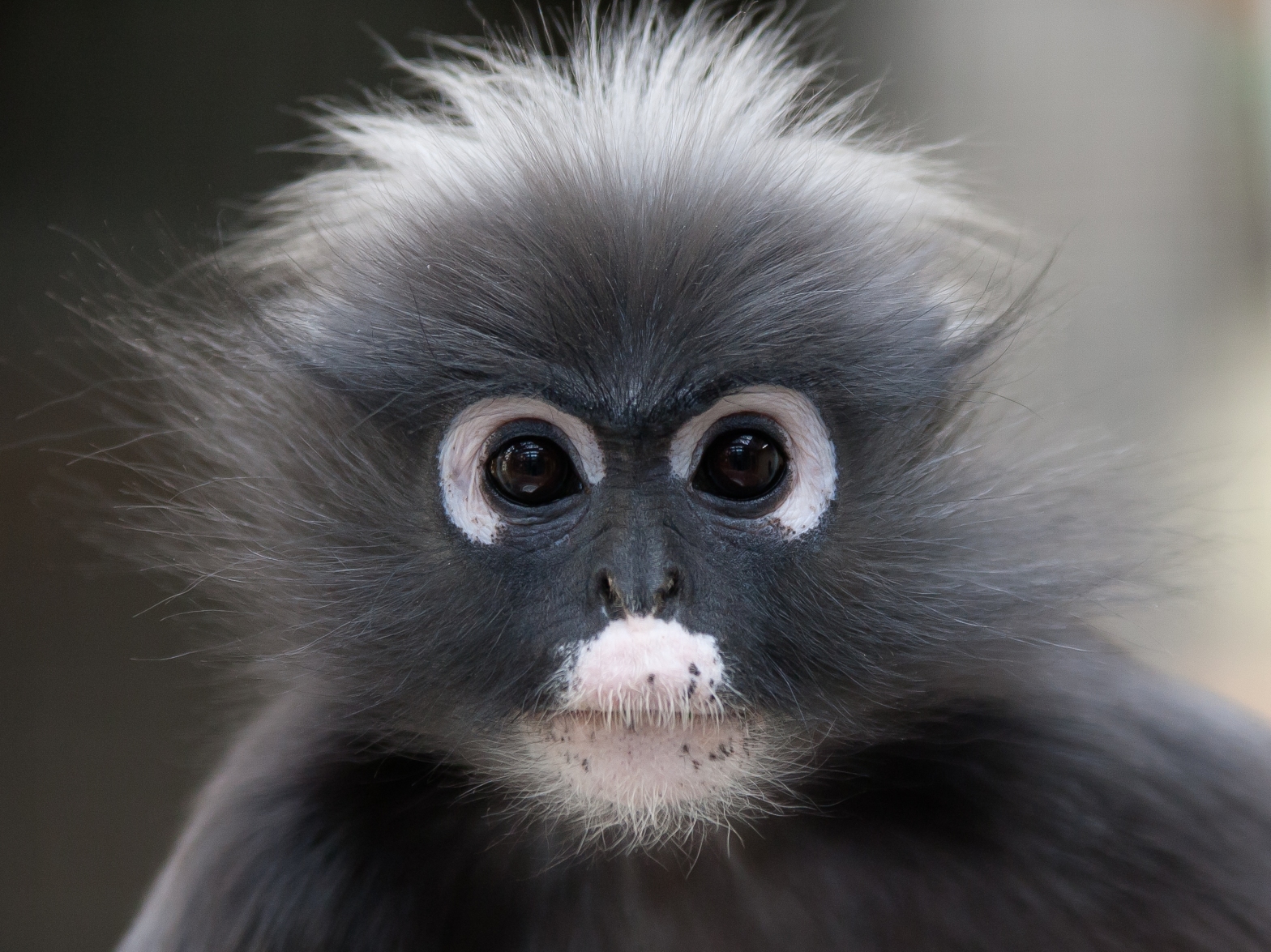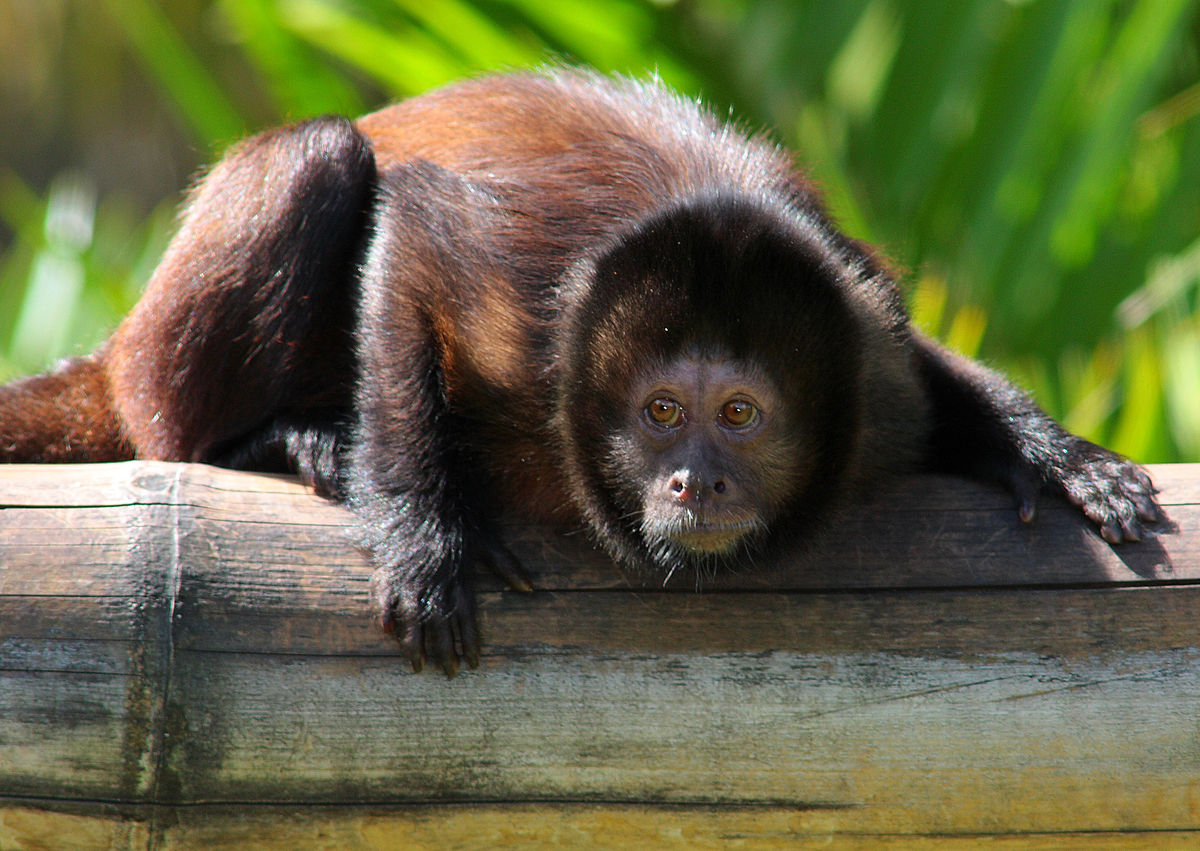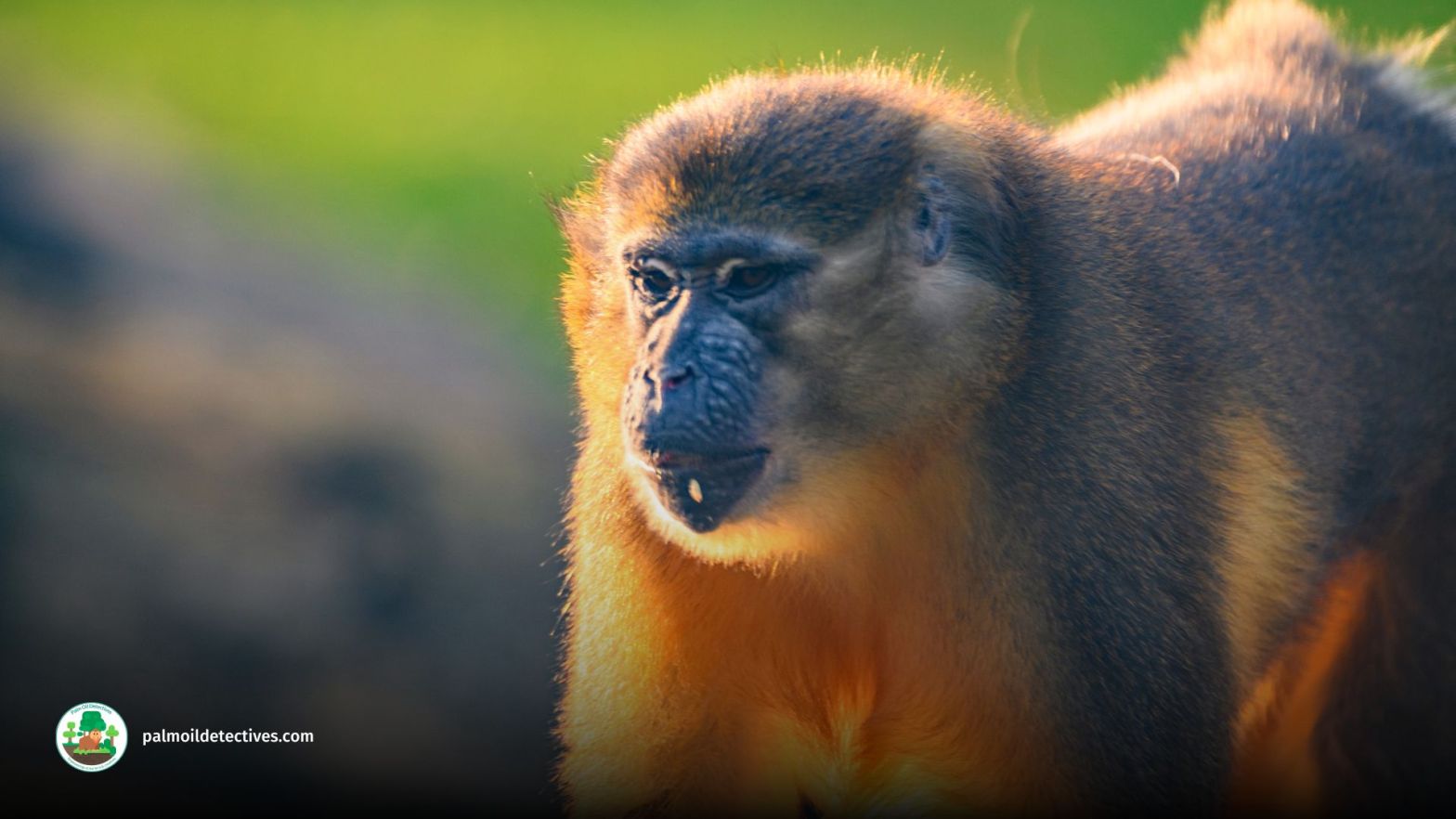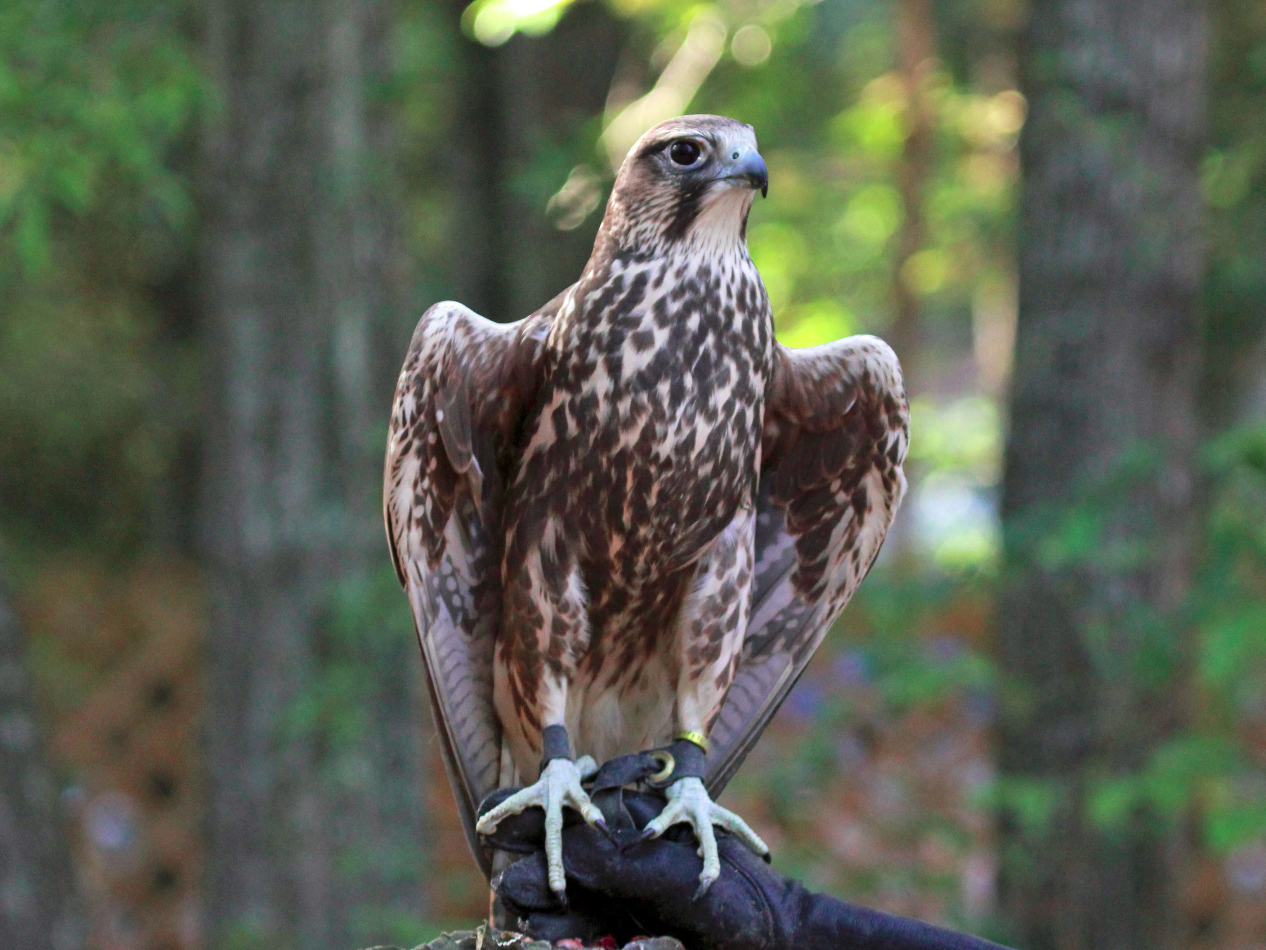In the verdant, high-altitude forests of Bougainville Island, Papua New Guinea, and Choiseul Island, Solomon Islands, lives an intriguing creature—the Bougainville Monkey-faced bat or, as some call them, the Bougainville Flying Monkey. These bats are the titans of their family, boasting arm spans stretching impressively between 14.1 to 16 cm. They are endangered, mostly from palm oil and mining deforestation and hunting. Help them to survive every time you shop and #Boycottpalmoil #Boycott4Wildlife
Tag Archives: Endangered species
Goliath Frog Conraua goliath
Goliath Frogs are the largest frog in the world and can grow as large as a domestic cat. These muscle-bound #amphibians lift heavy rocks to build nests and protect their young. They face extinction from #palmoil #deforestation.
Their nesting and reproduction is hugely dependent upon access to clean, fast-flowing rivers – for this reason the encroachment of industrial scale palm oil, cocoa and timber deforestation and p0llution of rivers is a direct threat to the existence of the goliath frog. Help them every time you shop in the supermarket and #Boycottpalmoil #Boycott4Wildlife
Bonobo Pan paniscus
Bonobos share 98% of their DNA with humans and are one of our closest extant relatives. They are complex beings with intricate social relationships, they demonstrate profound intelligence and emotional sensitivity.
It is therefore fitting that 14th of February, Valentine’s Day is also the International Day to celebrate Bonobos – Bonobos provide a potent example to humans for how we can resolve conflicts through love and non-violent conflict resolution. They are endangered in DRC/Congo from infectious diseases, illegal poaching and deforestation for palm oil, cocoa and meat and mining throughout their home range. Help their survival every time you shop – be vegan and #Boycottpalmoil #Boycott4Wildlife.
Africa is becoming the new frontier for oil-palm plantations, which offers excellent economic prospects in countries with appropriate rainfall, soil and temperature conditions (Rival and Levang 2014). A staggering 99.2% of the Bonobo’s range is suitable for oil palm (Wich et al. 2014), highlighting the enormous risk the palm-oil industry will pose unless sustainable management plans are developed and implemented to protect great apes and their habitats (IUCN SSC Primate Specialist Group 2014).
Dryas Monkey Chlorocebus dryas
Dryas Monkeys are secretive and vividly colourful monkeys who hang on to survival in the forests of the Congo. There is estimated to only be 100-250 individual monkeys still alive. They are fruit-eaters and play a critical role in ensuring the dispersion of seeds and therefore the future health of the DRC’s rainforests. They are preyed upon by leopards in the Congo basin. However, the main threat they face is the illegal poaching and hunting by humans for bushmeat, along with deforestation for palm oil, mining and other commodities.
Protect them each time you shop by boycotting meat and palm oil in the supermarket. #Boycott4Wildlife
Quince Monitor (Banggai Island Monitor) Varanus melinus
The Quince Monitor Varanus melinus is a rare and elusive species of monitor lizard that lives in only one location in Indonesia – the Maluku Islands. Their muscular, wide stance and ancient dragon-like looks make them fascinating to behold. They are endangered primarily from palm oil deforestation in their range. They have no known protections in place.
Protect them each time you shop by boycotting meat and palm oil in the supermarket.
Assam Rabbit (Hispid Hare) Caprolagus hispidus
Shy, solitary and wary Hispid hares are most active during dawn and dusk. They often take shelter from predation in tall grasses and the burrows of other animals. They are endangered by multiple human-related threats including palm oil deforestation in the Assam region of India and they also hold to survival in Bhutan and Nepal.
Their main threats are habitat loss to palm oil as well as climate change related extreme weather. Protect them each time you shop by boycotting meat and palm oil in the supermarket.
Pygmy Hog Porcula salvania
Pygmy hogs are only found in the lush and dense grasslands of Manas National Park, a small protected region in the shadows of the Himalayan mountains. These shy tiny wild pigs are the smallest pigs in the world and also the most endangered, threatened by habitat loss for palm oil and meat agriculture. Help them to survive each time you shop and #BeVegan #Boycottpalmoil and #Boycott4Wildlife
Buffy-tufted-ear Marmoset Callithrix aurita
These enchanting and charismatic tiny monkeys have a distinct “gothic” appearance. They live deep in the forests of a tiny area of Brazil. Buffy-tufted-ear Marmosets are also known as buffy tufted-ear mamosets or the white-eared marmosets. They are New World monkeys living in a geographically isolated region in the Atlantic coast that has been decimated for palm oil, soy and cattle ranching agriculture and mining. Help them every time you shop and be #vegan, #Boycottpalmoil and #Boycott4Wildlife!
Giant Otter Pteronura brasiliensis
The agile and graceful tumbling Olympians of the Amazonian rivers, Giant Otters are able to swim 100 metres in less than 30 seconds. They are also known as the Lobo de Rio (the River wolf), Los Lobos del Rio (Wolves of the River) and Ariranha. They are most active in the mornings and evenings and take a siesta during the hottest parts of the day.
The most significant threats to giant otters are anthropogenic pressures of deforestation for palm oil, soy and meat, pollution from mining and climate change. They are also illegally hunted and traded for their pelts or killed in retribution by fishermen. Help them and be #vegan #Boycottpalmoil #Boycott4Wildlife
How forest elephants move depends on water, humans, and also their personality
African forest elephants roam the dense rainforests of West and Central Africa where they subsist largely on a diet of fruit. They shape forests by dispersing fruit and seeds, browsing, and creating an extensive trail network. John Poulsen, Duke University and Christopher Beirne, University of British Columbia But because it’s difficult to track animals inContinue reading “How forest elephants move depends on water, humans, and also their personality”
Black Bearded Saki Chiropotes satanas
Black Bearded #Sakis are #endangered large monkeys endemic to #Brazil #SouthAmerica they are #endangered by #timber #palmoil #hydroelectric dam #deforestation. Help save them every time you shop and #Boycottpalmoil #Boycott4Wildlife!
Golden Monkey Cercopithecus mitis ssp. kandti
The Democratic Republic of the Congo; Rwanda; Uganda Endangered Golden Monkey Cercopithecus mitis ssp. kandti The Golden monkey Cercopithecus kandti are Old World monkeys that live nestled deeply into the Virunga volcanic mountains of Central Africa. They are found in four national parks: Mgahinga, in south-west Uganda; Volcanoes, in north-west Rwanda; and Virunga and Kahuzi-Biéga,Continue reading “Golden Monkey Cercopithecus mitis ssp. kandti”
Dusky Langur Trachypithecus obscurus
Playful, gregarious and social Dusky Langurs prefer to live in closed primary forests, but they can also be found in old-growth secondary and disturbed forests, plantations, urban areas, and parks, suggesting that they are adaptable compared to other colobine species. They are mostly tree dwelling and active during the day. They face many threats including hunting and deforestation for palm oil and other agriculture. Help them every time you shop and #Boycottpalmoil #Boycott4Wildlife
Baird’s Tapir Tapirus bairdii
Baird’s Tapir Tapirus bairdii Endangered Extant (resident): Belize; Colombia; Costa Rica; Guatemala; Honduras; Mexico; Nicaragua; Panama Extinct: El Salvador Presence Uncertain: Ecuador Baird’s tapirs may look like they are relatives of elephants, but they’re actually closer kin to horses, donkeys, zebras, and rhinoceroses. The Baird’s Tapir is found in forested areas with ponds and streamsContinue reading “Baird’s Tapir Tapirus bairdii”
Varied White-fronted Capuchin Cebus versicolor
Varied White-fronted Capuchin Cebus versicolor Colombia Endangered Varied White-fronted Capuchin monkeys are gregarious and social animals that live in multi-male multi-female groups of approximately 20 individuals (including young), they are territorial and actively defends territories. Their main threats are agriculture, urban sprawl, deforestation, increasing energy matrix, increasing road matrix habitat fragmentation, habitat reduction, hunting, harvestingContinue reading “Varied White-fronted Capuchin Cebus versicolor”
Crested Capuchin Sapajus robustus
Crested Capuchin Sapajus robustus Brazil (Bahia, Espírito Santo, Minas Gerais) Endangered The crested capuchin or robust tufted capuchin (Sapajus robustus) is a species of robust capuchin monkey living in Brazil. They were formerly considered a subspecies of the black capuchin but is now considered to be a separate species. The species has a broad diet,Continue reading “Crested Capuchin Sapajus robustus”
Golden-bellied Mangabey Cercocebus chrysogaster
Golden-bellied Mangabeys are only found in the Democratic Republic of Congo in tropical rainforests. They are known for their striking bright yellow and gold bellies which is easily distinguishable from their orange fur. They breed once per year, giving birth to one offspring that will not be fully independent until they are 4 to 5 years old. They are a nomadic, social species that travel in groups from 8 to 30 individuals. They have pouches in their cheeks which allow them to transport food.
Saker Falcon Falco cherrug
The Sager Falcon is a majestic and powerful birds of prey that have a wide range throughout much of Southern Europe, the Middle East and parts of Africa. Their plumage ranges from chocolate brown in colour to a pale sandy with brown bars or streaks and can be snow white and off-white.
Ariel Toucan Ramphastos ariel
Ariel Toucan Ramphastos ariel Endangered Brazil No conservation The Ariel Toucan is one of the most iconic birds of the Amazon rainforest, depicted in countless pieces of art and historical renderings. They live in forested lowlands, most often near water, forest edge, swamp forest, clearings, riverine forest, patches in savannas, cerrado and riverine forest, upContinue reading “Ariel Toucan Ramphastos ariel”
Yucatán Black Howler Monkey Alouatta pigra
Yucatán Black Howler Monkeys are best known for their overpowering howl which can be heard up to 3 miles away. Morning and evening howling sessions can go on for over an hour. They are the largest #monkey in Latin America and keep a watchful presence in densely forested primary and secondary forest, mangroves and other human disturbed landscapes.
Their range is being rapidly destroyed for palm oil and sugar cane deforestation and mining. They are also facing human persecution and hunting pressures. Yucatán Black Howler Monkeys have been classified as endangered since 2004. Help them every time you shop and #Boycottpalmoil #Boycott4Wildlife

